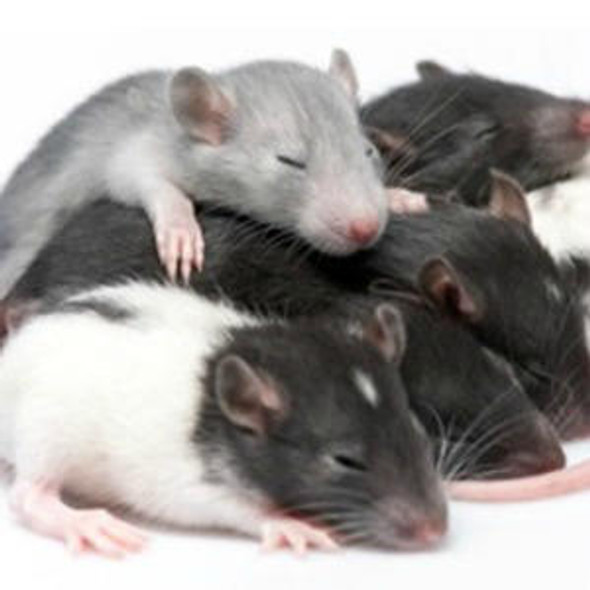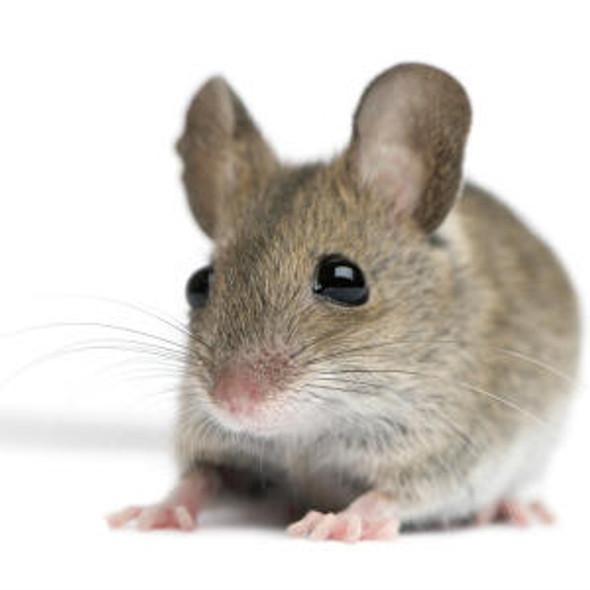Rat STAT5B (Signal Transducer And Activator Of Transcription 5B) ELISA Kit (RTES00737)
- SKU:
- RTES00737
- Product Type:
- ELISA Kit
- Size:
- 96 Assays
- Uniprot:
- P52632
- Sensitivity:
- 0.09ng/mL
- Range:
- 0.16-10ng/mL
- ELISA Type:
- Sandwich
- Reactivity:
- Rat
- Sample Type:
- Serum, plasma and other biological fluids
- Research Area:
- Epigenetics and Nuclear Signaling
Description
Rat STAT5B (Signal Transducer And Activator Of Transcription 5B) ELISA Kit
The Rat STAT5B (Signal Transducer and Activator of Transcription 5B) ELISA Kit is specifically designed for the accurate quantification of STAT5B levels in rat serum, plasma, and cell culture supernatants. This advanced kit offers high sensitivity and specificity, ensuring precise and consistent results for a variety of research applications.STAT5B is a critical protein that functions as a transcription factor, regulating the expression of genes involved in cell growth and development.
Dysregulation of STAT5B signaling is linked to various diseases, including cancer and autoimmune disorders, making it a valuable target for therapeutic interventions and biomarker studies.With the Rat STAT5B ELISA Kit, researchers can gain valuable insights into the role of STAT5B in physiological and pathological processes, ultimately facilitating the development of novel treatments and diagnostic tools.
| Assay type: | Sandwich |
| Format: | 96T |
| Assay time: | 4.5h |
| Reactivity: | Rat |
| Detection Method: | Colormetric |
| Detection Range: | 0.16-10 ng/mL |
| Sensitivity: | 0.10 ng/mL |
| Sample Volume Required Per Well: | 100µL |
| Sample Type: | Serum, plasma and other biological fluids |
| Specificity: | This kit recognizes Rat STAT5B in samples. No significant cross-reactivity or interference between Rat STAT5B and analogues was observed. |
This ELISA kit uses Sandwich-ELISA as the method. The micro ELISA plate provided in this kit has been pre-coated with an antibody specific to Rat STAT5B. Standards or samples are added to the appropriate micro ELISA plate wells and combined with the specific antibody. Then a biotinylated detection antibody specific for Rat STAT5B and Avidin-Horseradish Peroxidase (HRP) conjugate are added to each micro plate well successively and incubated. Free components are washed away. The substrate solution is added to each well. Only those wells that contain Rat STAT5B, biotinylated detection antibody and Avidin-HRP conjugate will appear blue in color. The enzyme-substrate reaction is terminated by adding Stop Solution and the color turns yellow. The optical density (OD) is measured spectrophotometrically at a wavelength of 450 nm ± 2 nm. The OD value is proportional to the concentration of Rat STAT5B. The concentration of Rat STAT5B in samples can be calculated by comparing the OD of the samples to the standard curve.
| UniProt Protein Function: | STAT5B: transcription factor of the STAT family. Phosphorylated and activated by receptor-associated kinases triggered by cytokines including IL2, IL3, GM-CSF, and various growth hormones. It has been shown to be involved in diverse biological processes, such as TCR signaling, apoptosis, adult mammary gland development, and sexual dimorphism of liver gene expression. Forms homo- or heterodimers that translocate into the nucleus where they regulate transcription. |
| UniProt Protein Details: | Protein type:Oncoprotein; Transcription factor; DNA-binding Cellular Component: cytoplasm; cytosol; nucleus Molecular Function:chromatin binding; DNA binding; double-stranded DNA binding; glucocorticoid receptor binding; protein binding; protein dimerization activity; protein phosphatase binding; sequence-specific DNA binding; signal transducer activity; transcription factor activity Biological Process: 2-oxoglutarate metabolic process; acute-phase response; allantoin metabolic process; cellular response to hormone stimulus; citrate metabolic process; creatine metabolic process; creatinine metabolic process; cytokine and chemokine mediated signaling pathway; development of secondary female sexual characteristics; development of secondary male sexual characteristics; fatty acid metabolic process; female pregnancy; isoleucine metabolic process; JAK-STAT cascade; lactation; liver development; luteinization; natural killer cell differentiation; negative regulation of apoptosis; negative regulation of erythrocyte differentiation; oxaloacetate metabolic process; Peyer's patch development; positive regulation of activated T cell proliferation; positive regulation of B cell differentiation; positive regulation of cell motility; positive regulation of cell proliferation; positive regulation of gamma-delta T cell differentiation; positive regulation of inflammatory response; positive regulation of interleukin-2 biosynthetic process; positive regulation of lymphocyte differentiation; positive regulation of mitotic cell cycle; positive regulation of multicellular organism growth; positive regulation of natural killer cell differentiation; positive regulation of natural killer cell mediated cytotoxicity; positive regulation of natural killer cell proliferation; positive regulation of smooth muscle cell proliferation; positive regulation of transcription from RNA polymerase II promoter; progesterone metabolic process; regulation of cell adhesion; regulation of epithelial cell differentiation; regulation of multicellular organism growth; regulation of steroid metabolic process; regulation of transcription from RNA polymerase II promoter; regulation of transcription, DNA-dependent; response to estradiol stimulus; response to ethanol; response to hypoxia; response to lipopolysaccharide; response to peptide hormone stimulus; sequestering of lipid; sex differentiation; signal transduction; succinate metabolic process; T cell differentiation in the thymus; T cell homeostasis; taurine metabolic process; transcription from RNA polymerase II promoter; transcription, DNA-dependent; valine metabolic process |
| NCBI Summary: | member of the STAT family of transcription factors; may mediate biological actions of several interleukins and growth hormones; may be associated with mammary gland development and lactation [RGD, Feb 2006] |
| UniProt Code: | P52632 |
| NCBI GenInfo Identifier: | 11693140 |
| NCBI Gene ID: | 25126 |
| NCBI Accession: | NP_071775. 1 |
| UniProt Related Accession: | P52632 |
| Molecular Weight: | 90,223 Da |
| NCBI Full Name: | signal transducer and activator of transcription 5B |
| NCBI Synonym Full Names: | signal transducer and activator of transcription 5B |
| NCBI Official Symbol: | Stat5b |
| NCBI Protein Information: | signal transducer and activator of transcription 5B |
| UniProt Protein Name: | Signal transducer and activator of transcription 5B |
| Protein Family: | Signal transducer and activator of transcription |
| UniProt Gene Name: | Stat5b |
| UniProt Entry Name: | STA5B_RAT |
As the OD values of the standard curve may vary according to the conditions of the actual assay performance (e. g. operator, pipetting technique, washing technique or temperature effects), the operator should establish a standard curve for each test. Typical standard curve and data is provided below for reference only.
| Concentration (ng/mL) | O.D | Average | Corrected |
| 10 | 2.593 2.607 | 2.6 | 2.543 |
| 5 | 1.722 1.778 | 1.75 | 1.693 |
| 2.5 | 1.038 1.028 | 1.033 | 0.976 |
| 1.25 | 0.45 0.48 | 0.465 | 0.408 |
| 0.63 | 0.264 0.25 | 0.257 | 0.2 |
| 0.32 | 0.174 0.166 | 0.17 | 0.113 |
| 0.16 | 0.106 0.122 | 0.114 | 0.057 |
| 0 | 0.052 0.062 | 0.057 | -- |
Precision
Intra-assay Precision (Precision within an assay): 3 samples with low, mid range and high level Rat STAT5B were tested 20 times on one plate, respectively.
Inter-assay Precision (Precision between assays): 3 samples with low, mid range and high level Rat STAT5B were tested on 3 different plates, 20 replicates in each plate.
| Intra-assay Precision | Inter-assay Precision | |||||
| Sample | 1 | 2 | 3 | 1 | 2 | 3 |
| n | 20 | 20 | 20 | 20 | 20 | 20 |
| Mean (ng/mL) | 0.50 | 1.50 | 4.80 | 0.45 | 1.59 | 5.17 |
| Standard deviation | 0.03 | 0.09 | 0.18 | 0.03 | 0.06 | 0.21 |
| C V (%) | 6.00 | 6.00 | 3.75 | 6.67 | 3.77 | 4.06 |
Recovery
The recovery of Rat STAT5B spiked at three different levels in samples throughout the range of the assay was evaluated in various matrices.
| Sample Type | Range (%) | Average Recovery (%) |
| Serum (n=5) | 95-111 | 102 |
| EDTA plasma (n=5) | 90-101 | 96 |
| Cell culture media (n=5) | 90-104 | 97 |
Linearity
Samples were spiked with high concentrations of Rat STAT5B and diluted with Reference Standard & Sample Diluent to produce samples with values within the range of the assay.
| Serum (n=5) | EDTA plasma (n=5) | Cell culture media (n=5) | ||
| 1:2 | Range (%) | 97-114 | 92-104 | 97-111 |
| Average (%) | 104 | 97 | 103 | |
| 1:4 | Range (%) | 89-104 | 87-97 | 88-98 |
| Average (%) | 95 | 92 | 93 | |
| 1:8 | Range (%) | 93-105 | 80-92 | 86-96 |
| Average (%) | 98 | 87 | 91 | |
| 1:16 | Range (%) | 91-104 | 81-94 | 89-100 |
| Average (%) | 96 | 87 | 95 |
An unopened kit can be stored at 4°C for 1 month. If the kit is not used within 1 month, store the items separately according to the following conditions once the kit is received.
| Item | Specifications | Storage |
| Micro ELISA Plate(Dismountable) | 8 wells ×12 strips | -20°C, 6 months |
| Reference Standard | 2 vials | |
| Concentrated Biotinylated Detection Ab (100×) | 1 vial, 120 µL | |
| Concentrated HRP Conjugate (100×) | 1 vial, 120 µL | -20°C(shading light), 6 months |
| Reference Standard & Sample Diluent | 1 vial, 20 mL | 4°C, 6 months |
| Biotinylated Detection Ab Diluent | 1 vial, 14 mL | |
| HRP Conjugate Diluent | 1 vial, 14 mL | |
| Concentrated Wash Buffer (25×) | 1 vial, 30 mL | |
| Substrate Reagent | 1 vial, 10 mL | 4°C(shading light) |
| Stop Solution | 1 vial, 10 mL | 4°C |
| Plate Sealer | 5 pieces | |
| Product Description | 1 copy | |
| Certificate of Analysis | 1 copy |
- Set standard, test sample and control (zero) wells on the pre-coated plate and record theirpositions. It is recommended to measure each standard and sample in duplicate. Note: addall solutions to the bottom of the plate wells while avoiding contact with the well walls. Ensuresolutions do not foam when adding to the wells.
- Aliquot 100µl of standard solutions into the standard wells.
- Add 100µl of Sample / Standard dilution buffer into the control (zero) well.
- Add 100µl of properly diluted sample (serum, plasma, tissue homogenates and otherbiological fluids) into test sample wells.
- Cover the plate with the sealer provided in the kit and incubate for 90 min at 37°C.
- Aspirate the liquid from each well, do not wash. Immediately add 100µL of BiotinylatedDetection Ab working solution to each well. Cover the plate with a plate seal and gently mix. Incubate for 1 hour at 37°C.
- Aspirate or decant the solution from the plate and add 350µL of wash buffer to each welland incubate for 1-2 minutes at room temperature. Aspirate the solution from each well andclap the plate on absorbent filter paper to dry. Repeat this process 3 times. Note: a microplatewasher can be used in this step and other wash steps.
- Add 100µL of HRP Conjugate working solution to each well. Cover with a plate seal andincubate for 30 min at 37°C.
- Aspirate or decant the solution from each well. Repeat the wash process for five times asconducted in step 7.
- Add 90µL of Substrate Reagent to each well. Cover with a new plate seal and incubate forapproximately 15 min at 37°C. Protect the plate from light. Note: the reaction time can beshortened or extended according to the actual color change, but not by more than 30min.
- Add 50 µL of Stop Solution to each well. Note: Adding the stop solution should be done inthe same order as the substrate solution.
- Determine the optical density (OD value) of each well immediately with a microplate readerset at 450 nm.






